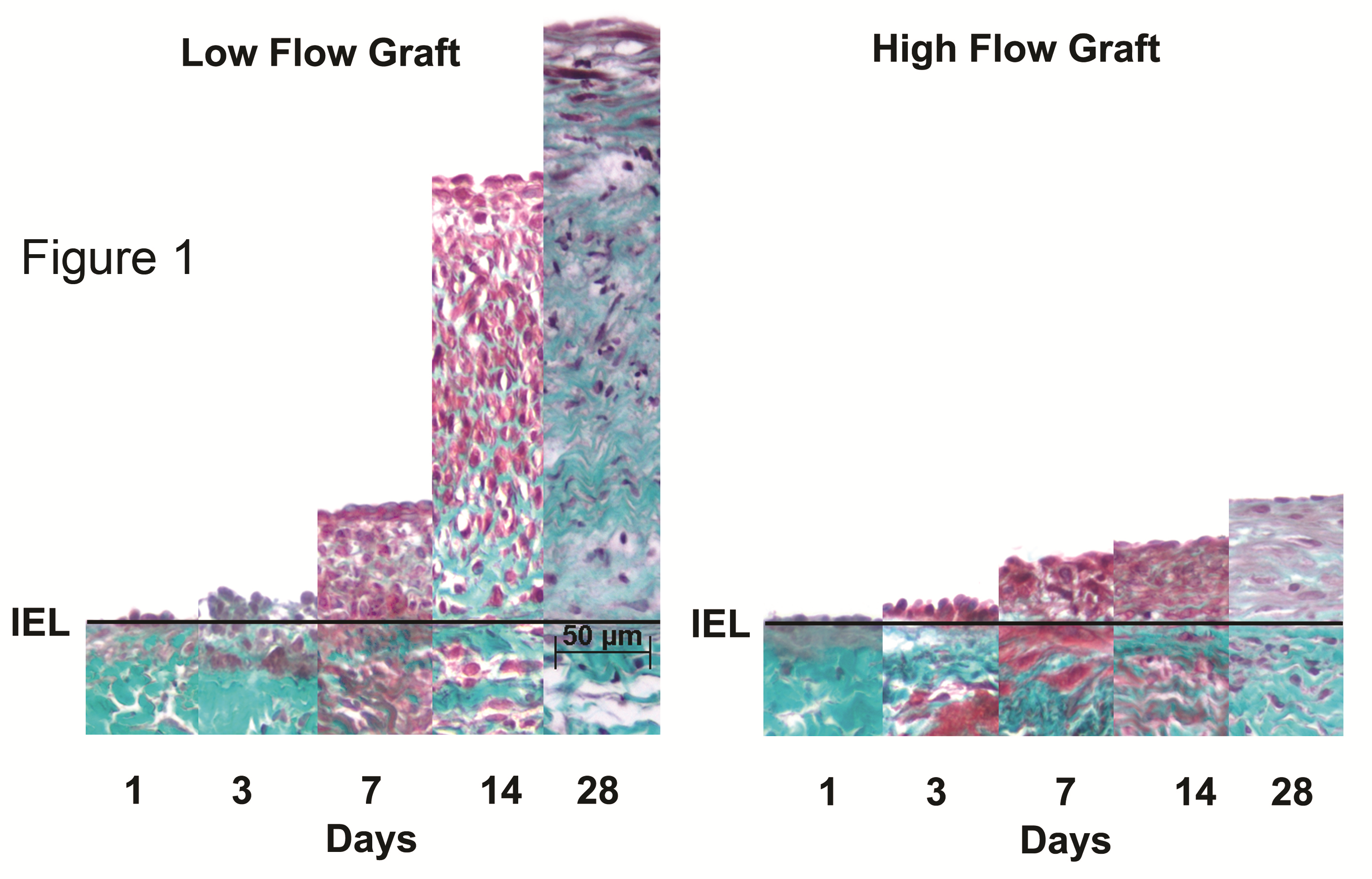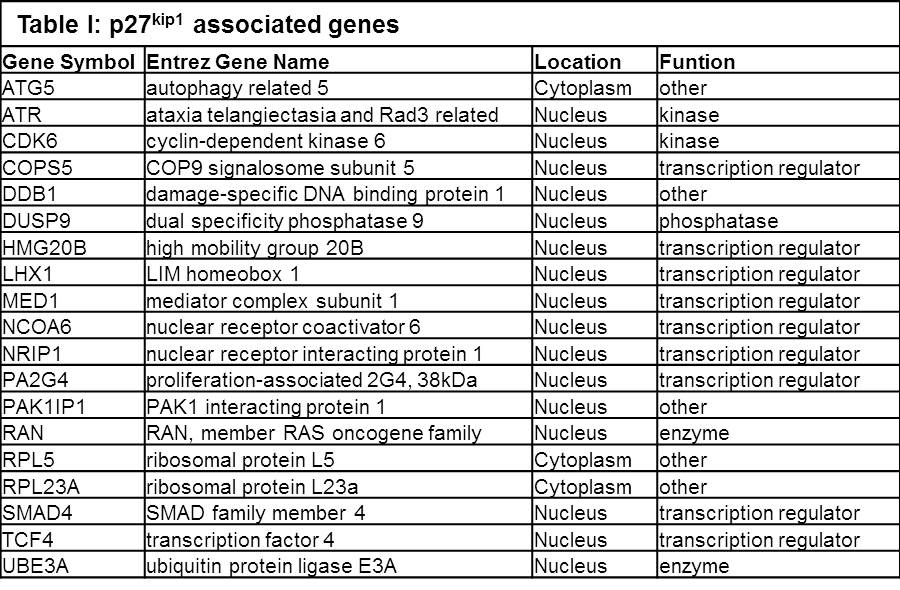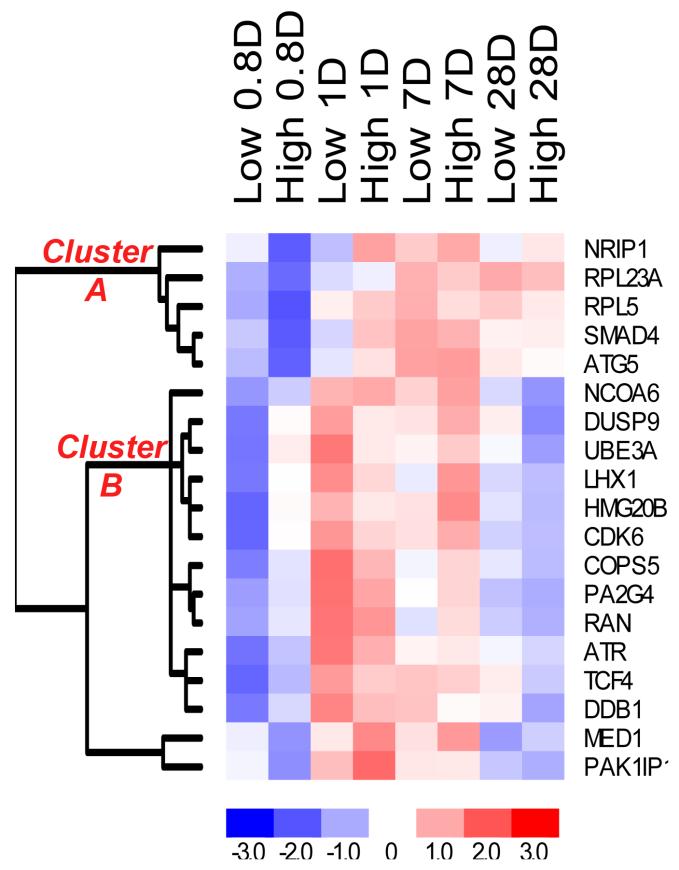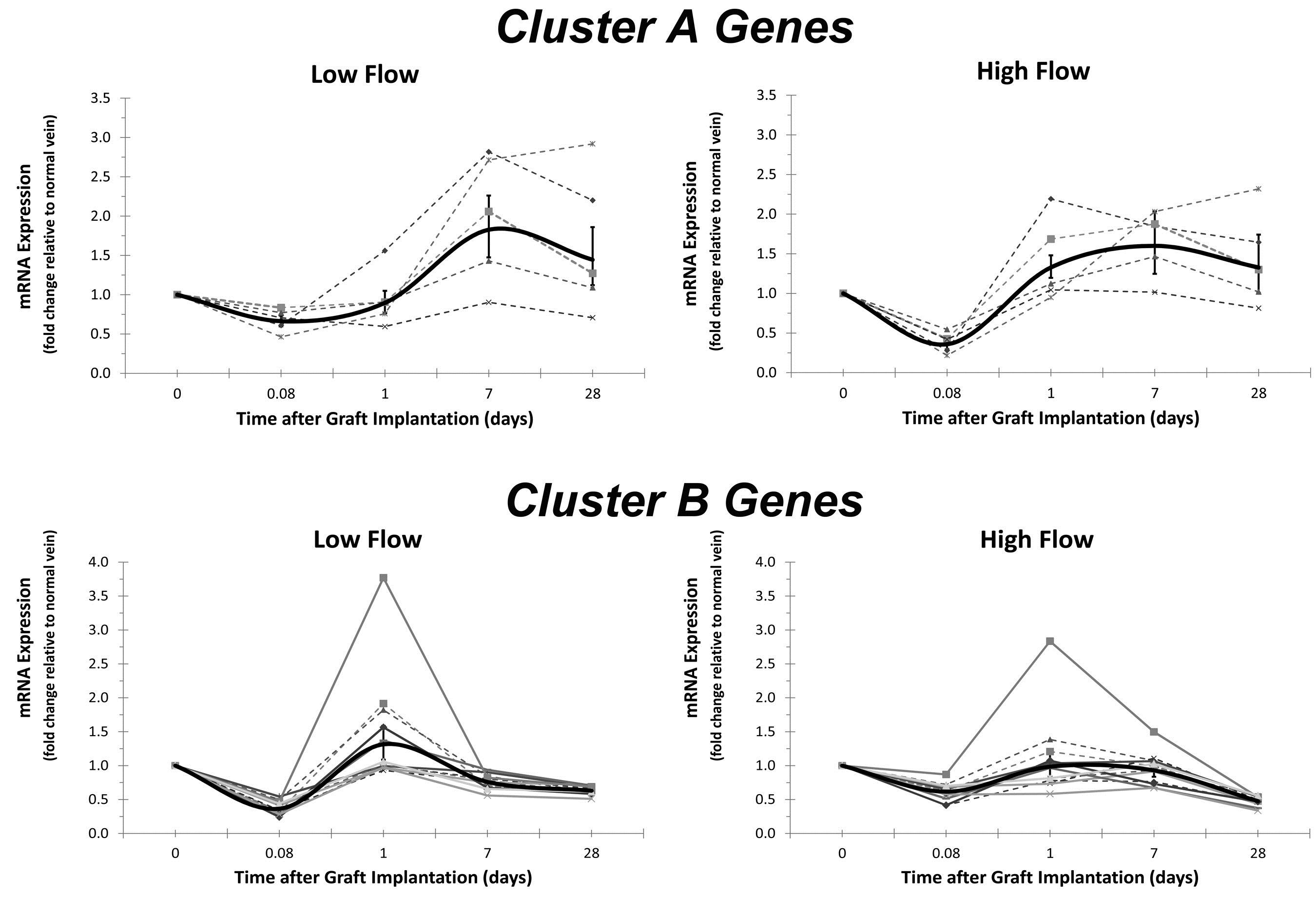Back to Annual Meeting Abstracts
A Systems Based Analysis of p27kip1 as the Driver for Pathologic Vein Graft Remodeling
Kenneth DeSart, Khayree Butler, Kerri O'Malley, Zhihua Jiang, Scott Berceli
University of Florida, Gainesville, FL
Background: The factors that lead to vein graft bypass restenosis and ultimate clinical failure are incompletely understood. Cell cycle regulators, such as the cyclin-dependent kinase inhibitor p27kip1, have been shown to play critical roles in the regulation of vascular cell proliferation. Conte et al and van Tiel et al, in fact, have identified a single nucleotide polymorphism (SNP) in the promoter region of the p27kip1 gene that is associated with divergent clinical outcomes following lower extremity vein bypass grafting (LEVBG) and coronary artery stenting, respectively [1,2]. Both clinical studies demonstrated the p27kip1-838C>A SNP to be associated with significantly increased rates of clinical success compared to the -838CC and -838CA genotypes. Although these represent highly significant and clinically relevant findings, these studies are primarily associative in nature and provide limited insight into the mechanistic details. Here we aim to develop a model to explore the precise mechanisms through which p27kip1 influences the local vascular wall biology.
There is a long history of divergent phenotypes of vein graft remodeling secondary to alterations in flow and wall shear stress. Previous work in our lab using a novel vein graft model demonstrated increased outward remodeling and decreased neointimal hyperplasia in response to high-shear environments [3]. Using high-throughput genomics we examined the specific genes and pathways that are closely associated with p27kip1 and demonstrate differential expression in the divergent clinical phenotypes seen in alternate flow and shear stress conditions.
Methods: A rabbit carotid artery interposition graft with jugular vein was placed and differential flow states were created through outflow branch ligation. Graft diameters and flow rates were documented at the time of implantation and harvest with ultrasound imaging. Vein grafts were harvested at 2 hours, 1 day, 7 days, and 28 days following implantation. Whole vessel homogenates were analyzed for gene expression using a custom Agilent rabbit microarray. Next, Ingenuity Pathway Analysis (IPA) (Ingenuity, Redwood City, CA) was employed to generate a list of the closest 150 upstream and downstream genes in relation to p27kip1. This list was cross-referenced to the rabbit array list to identify overlapping genes, and this set of p27kip1-associated genes was analyzed for divergent expression profiles between high and low shear conditions. These genes were then further explored using IPA for ontologic analysis and creation of signaling networks. dChip software (Harvard, Boston, MA) was used for clustering analysis and heat map generation.
Results: Outflow branch ligation resulted in an immediate 90% reduction in flow on the ligated (low-flow) vein graft side compared to the high flow side (3.1 ± 0.4 vs. 30.0 ± 2.2 ml/min), and a 15-fold difference in mean flow rates was observed throughout the 28-day perfusion period (p < 0.001). The reduction in flow led to a robust hyperplastic response, so that by 28 days a 7-fold increase in neointimal thickness was noted in the low-flow versus the high-flow vein grafts (231 ± 35 vs. 36 ± 18 µm, p = 0.001) (Figure 1).
IPA was used to identify the gene networks and signaling pathways surrounding p27kip1. Nineteen probes sets within the microarray were identified to be components of the p27 network (Table I). Sixteen of these genes encode nuclear proteins, the majority of which are transcription regulators. The top functions of this gene set are cell cycle regulation (13 genes), cellular growth and proliferation (17), gene expression (11), cellular development (14), and cell death and survival (12). A supervised clustering analysis of these genes revealed two primary patterns of gene expression, yielding two sets of genes with unique patterns of expression (Figure 2). Cluster A was characterized by a more delayed but prolonged up-regulation when compared to cluster B. Additionally, cluster B exhibits greater up-regulation at 7 days, and greater down-regulation at 28 days in the high-flow versus the low-flow grafts, suggesting a global flow-dependent genomic response (Figure 3).
Custom signaling networks were generated for each flow state to explore the relationships of these 19 genes to themselves and to p27kip1 as gene expression changes over time. Figure 4 depicts the dynamic nature of these networks and the differential up and down-regulation of specific genes in their subcellular locations between the high and low-flow vein grafts.
Conclusions: Vein graft remodeling is a complex process driven by the interplay of local and systemic biology with mechanical forces. Despite technological advances and improvements in surgical techniques, the precise factors that determine whether a vein graft adopts an adaptive, outwardly remodeling phenotype, versus an occlusive phenotype, are largely unknown. A SNP of the p27kip1 gene, a key cell-cycle regulator, has recently been associated with improved revascularization outcomes, yet the mechanisms underlying this clinical observation remain undefined. Here we attempt to dissect the gene pathways and networks at play in shaping these divergent outcomes.
In the current analysis, we demonstrate that time-dependent response to injury following vein graft implantation exerts the dominant influence on alterations in the p27kip1 regulatory network. Although changes in flow result in marked differences in graft phenotype, this biologic impact is mediated by a broad modulation of the p27kip1 pathway. Difference in gene expression between high and low flow occurred predominately in the 1 to 4 week timeframe, the time at which robust proliferation is dominating the rapid growth of the intima. Intervention of the p27kip1 pathway may offer an important option for modulating cell cycle processes that contribute to maladaptive vascular remodeling. In particular, cytoplasmic ribosomal and autophagy proteins appear to be the most promising candidates for therapeutic intervention.
1. Conte, M.S., et al. A single nucleotide polymorphism in the p27Kip1gene is associated with primary patency of lower extremity vein bypass grafts. J VascSurg, 2013. 2013 May;57(5):1179-85.
2. Van Tiel, C.M., et al. p27kip1-838C>A single nucleotide polymorphism Is associated with restenosis risk after coronary stenting and modulates p27kip1 promoter activity. Circulation. 2009 Aug 25;120(8):669-76.3. Jiang, Z., et al. A novel vein graft model: adaptation to differential flow environments. Am J Physiol Heart Circ Physiol. 2004 Jan;286(1):H240-5.





Back to Annual Meeting Abstracts
